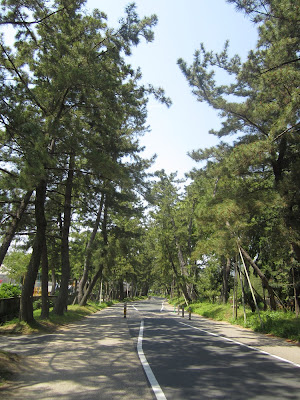Aichi is historically important as it was the birthplace of Oda Nobinaga, Toyotomi Hideyoshi and Tokugawa Ieyasu, three heroes of Japanese history who opened the door from the middle age to the early modern period.
Aichi is famous today for its manufacturing and agriculture. Toyota Motor has its headquarters and many factories in Aichi. Many auto-parts makers and other manufacturers have offices and factories here. They produce many vegetables, dairy goods and other agricultural products here.
Today’s walk started from Haccho-cho, western part of Okazak. It is a home land of Haccho miso, a special fermented soybean paste. It has been produced for nearly 350 years. Old buildings of the Edo period also remain here.
Some factories are open for public and I visited Kakukyu’s factory. There were many big barrels in a warehouse building. Miso was in the process of fermentation in them. Other barrels were being dried outside the warehouse. Miso soup was served after the tour.
I walked westward and arrived in Anjo City. The city is called “Japan’s Denmark” as it has developed daily industry. Vegetables are also produced. Fresh farm products were sold at a market.
A festival of Kakitsubata (Iris laevigata) was held at Yatsuhashi area in the city. A famous legend of Ariwara no Narihira, a waka poet in the 9th century, was linked with the area.
There were many factories along Tokaido. Lines of old pine trees continued in front of some factories. I also saw the fields of wheat and other agricultural product along the street (2nd photo).
I passed Chiryu, the 39th station, and crossed Mikawa-Owari border. Huge power transmission towers stood here. I continued my walk to Okehazama, an old battlefield.










1.JPG)











.JPG)

.JPG)


.JPG)
.JPG)
.JPG)







